Cultural Significances and Economic Prospective of Ondra Fort in Gulmit Gojal (Part 3)
Locale of the Fort
Ondra Fort is situated on a plateau like place on top of Gulmit. Surrounded with fascinating views of the whole area (from Shishkat to Passu, even the Qorun Peak in Shimshal)
Locale of the Fort is like oval shaped; divided into two main parts. The rough sketch below will help us to understand the structure of the Fort.
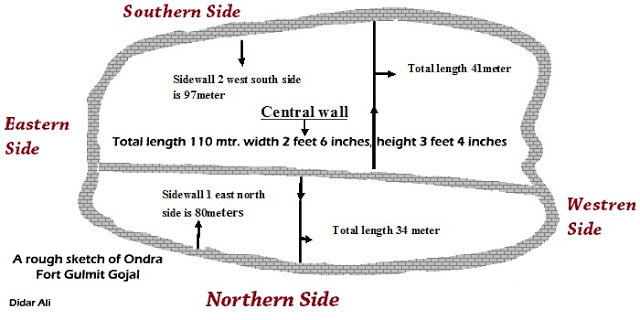
According to my key respondents the entrance part (southern side) which is a bit lower from northern side was located for the locals and army of Mir Qutlugh, the remnants of the old houses are self-witness. The northern part of the Fort is a bit high, according to my key informants on the corner on the western side, there was 3 story tower built from wood mass to help the army to monitor the entire area.
Fortification Wall
Mud and stones were mostly used to construct the boundary wall, the central wall, and as well as the houses. Average sizes of defense walls are 12feet, to make the defense wall stronger the locals have used double layer stones and on top of fortification walls there is 2feet high one line mud block wall. There are few loopholes in defense walls, which are undoubtedly for guns and other ancient weapons.
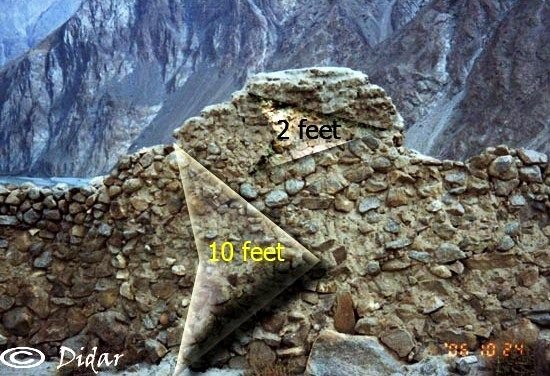
Storage Boxes
There are remnants of rectangle shaped boxes made from mud blocks and mud plaster. These boxes are considered to be used for storage, wheat grains, barley, dry fruits and vegetables especially when there is insecurity and flood in the area. Normal sizes of those boxes are 6x6 feet, and depth of those boxes is 3 to 4feet.
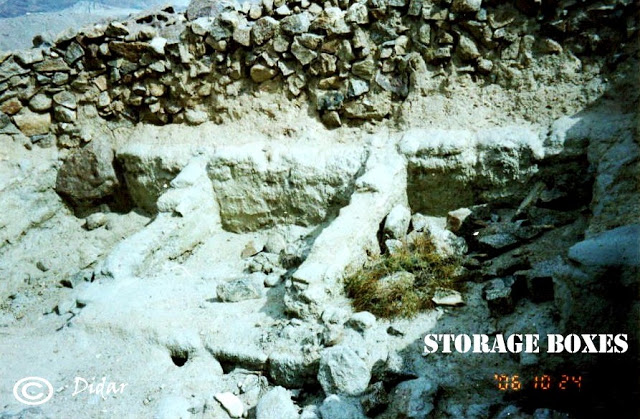
Housing Pattern at Ondra Fort
A brief introduction will help us to understand the basic structure and ancient style of housing pattern in Gulmit Gojal.
“The houses were basically simple box structures as a single with flat roof made of wood, stone and mud mortar. Now a day there is some improvement people added 2, 3 or 4 bedrooms and separate kitchen bathrooms and toilets”. (G.Rasool-1995)
In the customary houses the Nikard is used for sitting which is central part of a house. In winter season there is always fire in Bukhari (made of iron) which is located in the middle of Dildung, this fire is used for cooking and also for heating the house.
“The khun, (which generally measures anywhere from 19’ x 21’-21’ x 24’) serves a variety of activities, which range from cooking to sleeping. In order to accommodate a diverse range of activities has been broken down into different floor levels with each having a specific name and function.
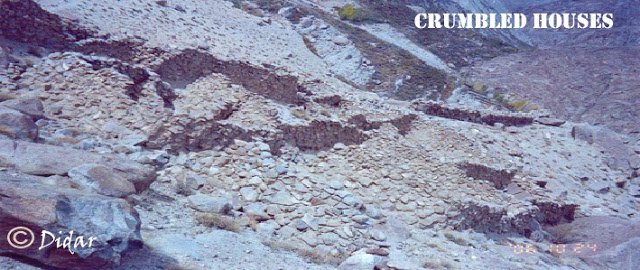
The center itself is classified into the yorch (the internal vestibule) which acts as a secondary vestibule generally all shoes are parked in this space before going up to any other portion. The nikard (the portion reserved for eating) is used for dining while the dildoong is used presently for food preparation, and traditionally (and still very infrequently) for grain storage. The past rajx, the kula raj and the nussoon raj are the platforms reserved for sleeping at night and sitting during the daytime. The past rajx is reserved for guests’ sleeping if there are any and, while at marriage ceremonies the space is reserved for musicians. The kula rajx is reserved for the children or extended family. The highest floor level the nussoon rajx is reserved for elders, the owner, and his wife". (Eric Dudly).
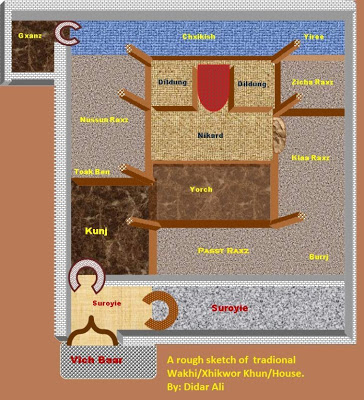
If we compare the housing patterns with the quarters at Ondra Fort it is quite different. Housing walls are mud plastered but not neatly like traditional houses of Wakhi people. The conditions and structures of the houses are generally rough and simple in structure. Mostly these houses have divide into three or four parts. First part includes on Nikard (the central area) the second and third parts included on Razx (the sleeping area) and the fourth part include on Chekish (area for food items and equipments). After the regime of Mir Jamal Khan the locals have taken away doors, wood pillars, and other valuable goods.
Desiccated lake at bottom of the Fort
Mud was one of the most essential materials to construct defense wall, houses and storage boxes. For that reason the locals shifted mud from the nearest jungle, which later turned a small but important water reservoir and during their stay at the Fort the inhabitants used water of the lake for drinking purposes.
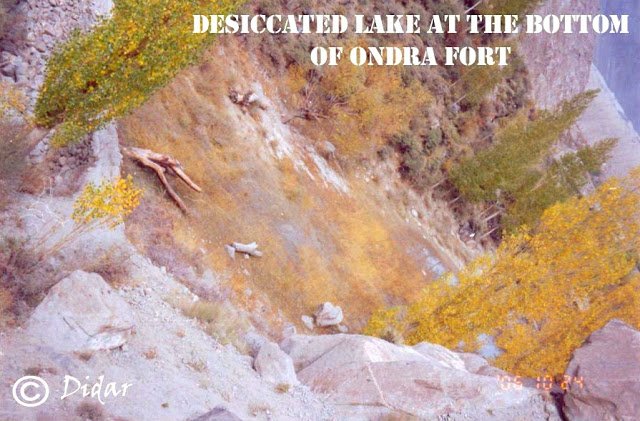
Very nicely narrated the history.
Congratulations @deedaar! You have received a personal award!
Click on the badge to view your Board of Honor.
Do not miss the last post from @steemitboard:
Congratulations @deedaar! You received a personal award!
You can view your badges on your Steem Board and compare to others on the Steem Ranking
Vote for @Steemitboard as a witness to get one more award and increased upvotes!